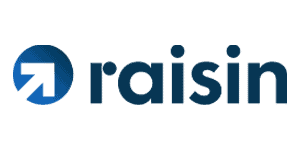Shana Hennigan is the Chief Business Officer of Raisin US, a unique turnkey digital solution that allows banks and credit unions to expand their reach and source funds from depositors nationwide, with KYC, AML, marketing and customer service included. With over 20 years of experience in the financial services, Hennigan previously served in senior roles at Bank of America Merrill Lynch, Promontory Interfinancial Network and Safened.

Three Ways Smaller Banks Are Leveling the Playing Field
While larger banks often have a leg up, smaller, community financial institutions can take steps to remain competitive.
Brought to you by Raisin

In 2023, failures of large financial institutions shook consumer confidence in banking. In fact, a May 2023 poll from The Associated Press-NORC Center for Public Affairs Research found that only a tenth of adults in the U.S. had “high confidence in the nation’s banks and other financial institutions” — less than half the amount that reported high confidence in 2020.
Despite this, big banks manage more than 70% of consolidated assets among Federal Deposit Insurance Corp.-insured banks, up from 42% in 2003. Meanwhile, the number of community banks in the U.S. shrank by nearly 50% in the same period.
From supporting small businesses to reaching communities that may have more limited access to banking services, small banks and credit unions play a vital role for the communities they serve.
How do these smaller institutions effectively meet consumer demand attain sustainable growth on a playing field built for a handful of behemoths? Here are three ways that community banks and credit unions are differentiating themselves and finding fintech solutions to solve their unique challenges.
1. Highlight Their Impact to Build Consumer Confidence
With smaller footprints, it can be easier for community banks and credit unions to have outsized impacts on their local areas.
One such institution is Ponce Bank, a certified Community Development Financial Institution founded in the Bronx, New York. Its founders countered the attitude that theirs was a community in decline and, in the decades since, Ponce Bank has remained focused on bringing banking services to areas where that help is in highest demand.
“A rising tide lifts all boats,” says Carlos Naudon, Ponce Bank’s CEO. Indeed, three-fourths of the bank’s loans go to people in low- to moderate-income neighborhoods, and over 80% of their loans go to communities they serve.
Beyond community development, mission-led banking in the form of financial donations, employee volunteer hours or other programs also gives smaller institutions an ability to set themselves apart.
First Financial Northwest Bank, with over a century of experience serving counties in Washington state, strives to make giving back to its communities part of its mission.
“Having a charitable program not only helps us to attract depositors, but also to retain them,” says Joseph W. Kiley, president and CEO of First Financial Northwest Bank. “People want to know their money is being put toward worthy causes.”
First Financial Northwest Bank serves as a promoter and sponsor of events and fundraisers benefiting local organizations and nonprofits. These relationships help show that they are truly a member of the community.
Highlighting community-focused or mission-led efforts offers smaller banks and credit unions ways to distinguish themselves as well as to organically reverse the tides of consumer confidence in banking.
2. Solutions to Combat High Compliance and Cybersecurity Costs
Growing costs from compliance and cybersecurity protection can also disproportionately impact small banks and credit unions.
The Conference of State Bank Supervisors found that compliance costs were typically around 10% of non-interest expenses for smaller banks, compared to 5% for larger institutions. Costs of cybersecurity measures can also be proportionally higher for smaller institutions, adding to the already competitive edge larger institutions have.
Finding solutions that help smaller institutions source deposits without adding to these costs can help them to grow sustainably. Those looking to compete with the economies of scale enjoyed by systemically important financial institutions have looked to financial technology solutions. These fintechs can help them increase funding without incurring the higher costs of servicing, compliance and cybersecurity.
By using a full-service funding model, dozens of banks and credit unions like Ponce Bank and First Financial Northwest Bank have been able to source retail deposits while relying on a fintech partner to market their products directly as well as handling compliance and cybersecurity.
3. Agility in Pricing
Despite a historic series of rate increases by the Federal Reserve, larger financial institutions continue to offer as little as 0.01% annual percentage yield on savings accounts. This has given smaller banks and credit unions the opportunity to offer American savers a much-needed lifeline.
In responding to this environment, smaller institutions have utilized digital savings platforms to source deposits quickly and competitively from across the U.S. They do this by offering interest rates in orders of magnitude higher than those offered by larger banks. In reaching an audience of savers beyond their traditional footprint, they’re also able to test products and rates without cannibalizing their main deposit base.


